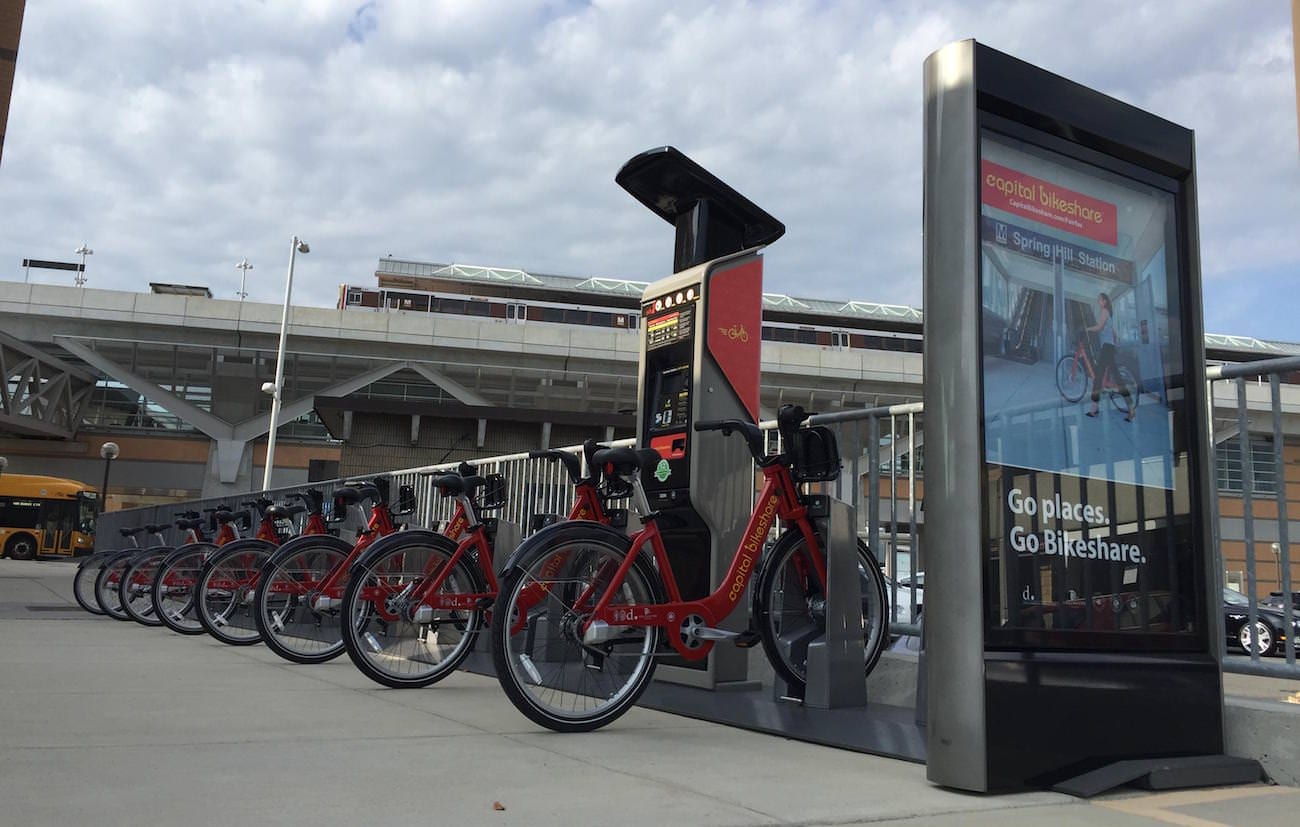Bicycle riding was not a transportation planning priority in major cities like Washington, DC in, say, the 1970s. It was even less de rigueur to ride one’s bicycle amidst the single occupancy vehicle-filled office parks of the suburbs – those areas have always been Car Country. But in many places, Car Country is becoming Multimodal Land.
As a 2013 APTA study stated, in referring to the transportation tastes of the Millennial generation, they choose “the most practical transportation mode (driving, public transit, biking or walking) for each trip.”
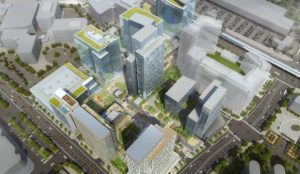
That’s one reason why the groundbreaking for the first Capital Bikeshare stations in Tysons on October 21 is so important. While Tysons still has some ways to go to become truly multimodal (note this walkability tour made by a University of Virginia urban and environmental planning professor in late 2015), new transportation options are steadily coming online.
Tysons – just a few miles from Washington, DC – is undergoing changes that are turning it into a mixed-use edge city. For example, the desolation currently found along Westpark Drive is on its way to becoming The Boro (see concept image here) – a truly urban environment that will feature office and residential towers, city parks, a new cinema and supermarket, and more.
“It shouldn’t come as a surprise that the easiest and fastest way to increase bike riding in a city is to re-envision streets with cycling in mind.”
But for now Tysons still retains many of the marks of its late-20th-century personality: suburban-style offices and shopping served by roads filled with cars. Over two years ago, a new transportation choice was delivered to access those suburban-style offices and shopping when Washington’s regional Metrorail completed its Silver Line route connecting Tysons with downtown Washington, DC. Now, the next transportation choice being delivered to Tysons is bikeshare.
The Story of Bikeshare in Tysons
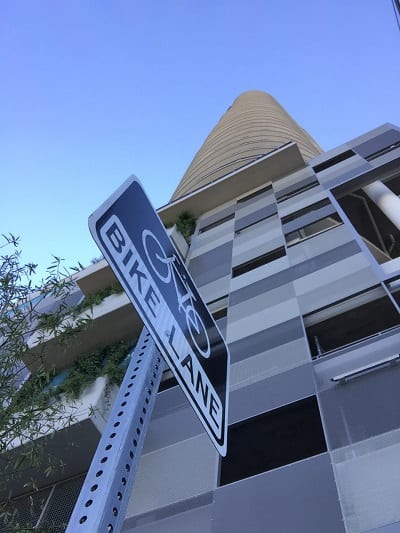
“It shouldn’t come as a surprise that the easiest and fastest way to increase bike riding in a city is to re-envision streets with cycling in mind; and that means adding safe, well-connected bike infrastructure for riders to use,” stated Matthew O. Smith, formerly a TDM specialist on Wells + Associates’ transportation demand management team.
Around eight years ago, the District of Columbia and Arlington, Virginia, just across the Potomac River from the nation’s capital, began experimenting with bikesharing, a service in which bicycles are made available for shared use to individuals on a short-term basis. These two jurisdictions eventually joined with other localities in the region to offer more than 3,000 bicycles as part of the Capital Bikeshare system.
In 2015, W+A, as part of our contract with the Tysons Partnership to oversee management and operations of the Tysons Transportation Management Association, began advocating for bike infrastructure improvements in Tysons.
In the fall of 2015, Fairfax County brought Adam Lind on board as its new Bicycle Program Manager. Said Lind at the time, “Our goal is to create a connected and safe bicycle network that will allow people to rethink their commute.” In early 2016, the Fairfax County Department of Transportation announced that it had obtained the necessary equipment to expand Capital Bikeshare to both Tysons and Reston, Virginia, a few miles to the west. The new Tysons network includes 14 stations that will serve multiple Silver Line stations, employment areas, and shopping and recreation destinations.
Transportation Planning: Connecting Tysons to the Rest of the Region
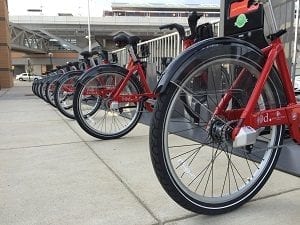
It’s one thing to be able to pick up a bike on one end of Tysons and ride it to another part of Tysons. But what about the next step? The next challenge will be to connect Tysons bike lanes to other bike paths and transportation options that dot the metropolitan region, allowing bikeshare to happen more easily across jurisdictions. There are plans to accomplish this.
As Mobility Lab noted in an article last month, WMATA (the DC area’s transit system) determined it can increase the “usefulness, safety, and reach of the rail system” if it improves pedestrian and bicycle access for its patrons – a concept known as the “first and last-mile connection.” The leading way for patrons to get to Metro stations is to walk, whereas only one percent of riders currently use a bike. Bikeshare can help improve mobility between these modes of travel.
Tech-Driven Transportation Solutions
Other solutions are distinctly tech-driven. For example, the Washington Area Bicyclists Association (WABA) and DCFemTech are working on a digital bike map to offer commuters access to all possible bike routes in the DC metro region. As you can see from a prototype of their project, bike routes throughout the region are fragmented and unconnected. And in many places, viable bike routes along roads are available for use but do not appear on this map.
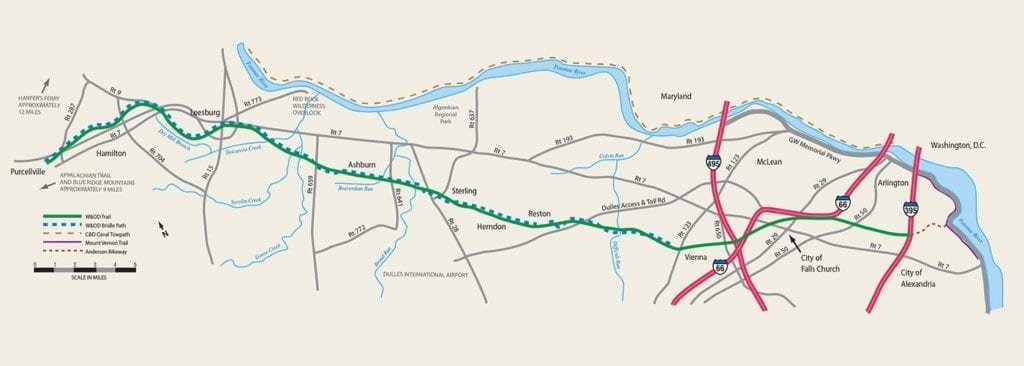
Other tech solutions could be on the horizon, such as this technology that integrates bikeshare with public transit using a tech-enabled bike and an app. Then there is Zipbike, a bikesharing program that pairs Zagster, a bikesharing operation, with Zipcar, the car-sharing company. Zipbike will be offered on 15 university campuses in the United States by the end of 2017.
Bicycle Riding Beyond Tysons
And yet, options currently exist to ride bicycles beyond Tysons. For example, from Tysons it is possible to bike along quiet streets in adjacent neighborhoods to the W&OD Trail in nearby Vienna. The W&OD Trail (click on map shown above, courtesy of NOVA Parks) extends 45 miles from Shirlington (in Arlington) to the west, past Leesburg to Purcellville. By the time you get to Purcellville, you are in sight of the Blue Ridge Mountains and about a dozen miles from Harper’s Ferry, West Virginia.
Bicycle “highways” like the W&OD can feed to more local routes, such as the dedicated bike lanes that were built in Leesburg in 2015.
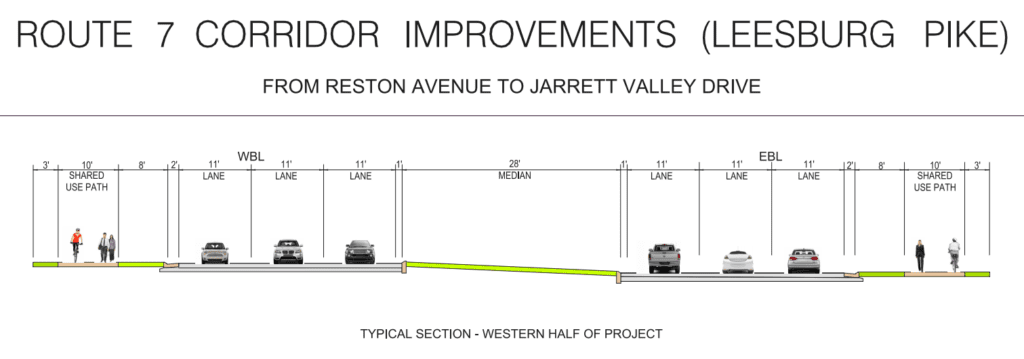
Plans to Widen and Diversify the Use of Route 7 (Leesburg Pike)
Finally, plans are afoot to significantly widen Route 7 from Tysons to Reston, which also has added Bikeshare locations. As you can see from this schematic (click on image here), the addition of 10-foot wide shared-use paths on both sides of the road have been proposed, which would allow pedestrians and bicyclists to use the Route 7 corridor to get into and out of Tysons.
While the future looks bright for turning Tysons and the surrounding region into an area with many more transportation options, it is enough today to congratulate Fairfax County on bringing Capital Bikeshare to this area of the Washington Metropolitan region.

